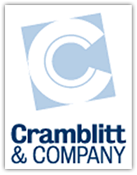PR in Practice: Anatomy of the case study, pt. 3
June 16th, 2009 | Comments Off on PR in Practice: Anatomy of the case study, pt. 3
Parts 1 and 2 of this series covered preparation for writing a good case study. This part deals with the hardest – and most satisfying – aspects of the process: writing and presenting the article.
When fingertips hit the keys
· Follow your outline or don’t. Your outline should be a guide, not a noose. Often when you begin the flow of writing, you find that logic dictates a different sequence of information. Let logic be your guide.
· Try not to get stuck or hung up on one aspect or another of the story. If you are having problems expressing something, leave a placemark and move ahead.
· If you don’t have a strong lead, don’t fret. Complete the bones and meat of the story and then come back to the sauce.
· Stick with the basics. Get your basic story down on paper first, then go back and fill in the blanks and fine tune.
· Rewrite, rewrite, rewrite. Good writing is rewriting. Nobody gets it right the first time. Don’t fret; consider four or five rewrites part of the process of producing a great story.
· Read like an idiot. Read your story as if you know nothing about the product and the application. Act as if you are learning-impaired when reading through any scenario described in your story.
· Read like a cynic. Make believe you are not sold on this product or this story. Proof-reading with a sneer on your face might help.
· Eliminate redundancy. I won’t say it again.
· Work and rework your lead(s). Rarely does a great lead introduce itself to you at the beginning of the writing process. Consider several different leads and analyze them according to relevance, level of interest, connection to the story as a whole. This is when you wrack your brain for irony, coincidence, humor, comparisons, word plays on clichés, history, current events, or anything else (as long as it is relevant to the story) that will attract attention.
· Feed your head. The headline is not a label, it’s a miniature story. While writing and rewriting the story, work over different permutations of the headline in your head. Write down ideas as they come to you, wherever you happen to be.
· Leave something for your fans. End with a bang. Or at least come full circle to your lead. But, don’t end as if you were tired of writing.
Presenting the article
When you send the article for review, make sure the customer knows the audience for which it is intended. Give a specific date for when you want to have comments and/or approval. Thank the customer for all of his or her help in preparing the article; treat him or her like a partner or co-writer.
When comments are received, think about them from the reviewer’s point of view. Make changes that are necessary. If you think a change damages the story, talk to the customer about it. Approach it as a partnership, telling him or her that you are afraid that omitting a key fact, for example, will damage the credibility of the story for the audience. Try to work around problems, while maintaining the integrity and value of the article.
Use in good health
The guidelines presented here are from years of experience in writing case studies that have value to editors and readers. They are based on many more successes than failures, but they are still guidelines, not rules. Your mileage may vary, but not by too much.

